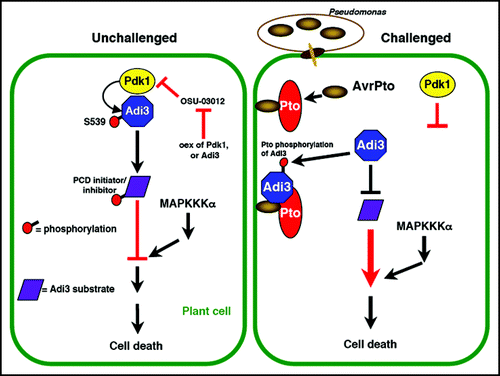Figures & data
Figure 1 Model for manipulation of Pdk1/Adi3 cell death regulation during pathogen interaction. In unchallenged plant cells, left, Adi3 is activated by Pdk1 phosphorylation at S539. Adi3 then acts to negatively regulate cell death by activating PCD inhibitors or inactivating PCD initiators. MAPKKKα acts downstream in a parallel connected pathway.Citation11 The Pdk1 inhibitor OSU-03012 induces cell death that can be attenuated by Pdk1 or Adi3 overexpression.Citation11 In Pst challenged cells, right, Adi3 interaction with Pto/AvrPto changes Adi3 cellular localization eliminating Pdk1 activation of Adi3. Thus, Adi3 can not act on downstream substrates leading to loss of cell death control and bringing about cell death. Pto phosphorylation of Adi3 may contribute to this inactivation of Adi3.
